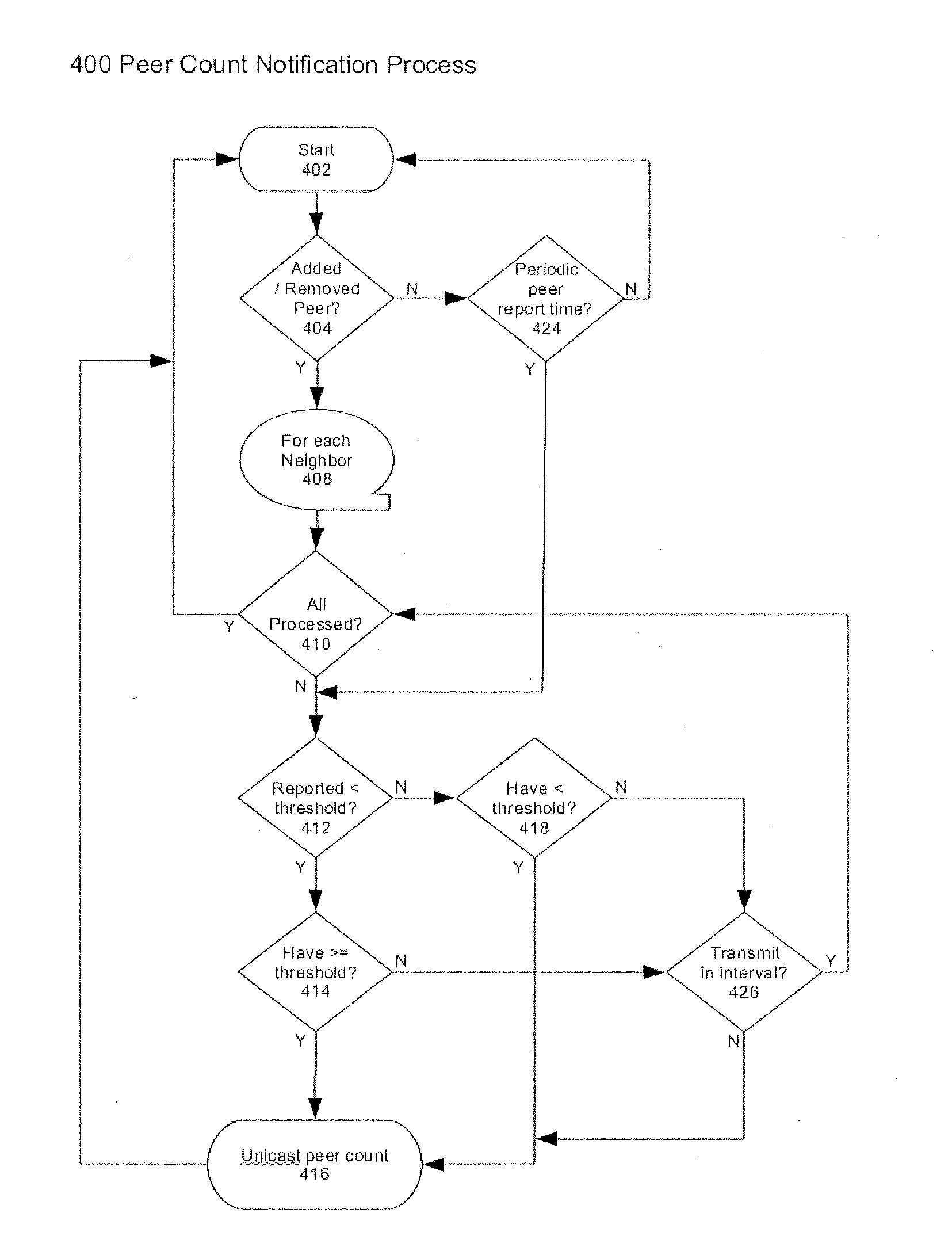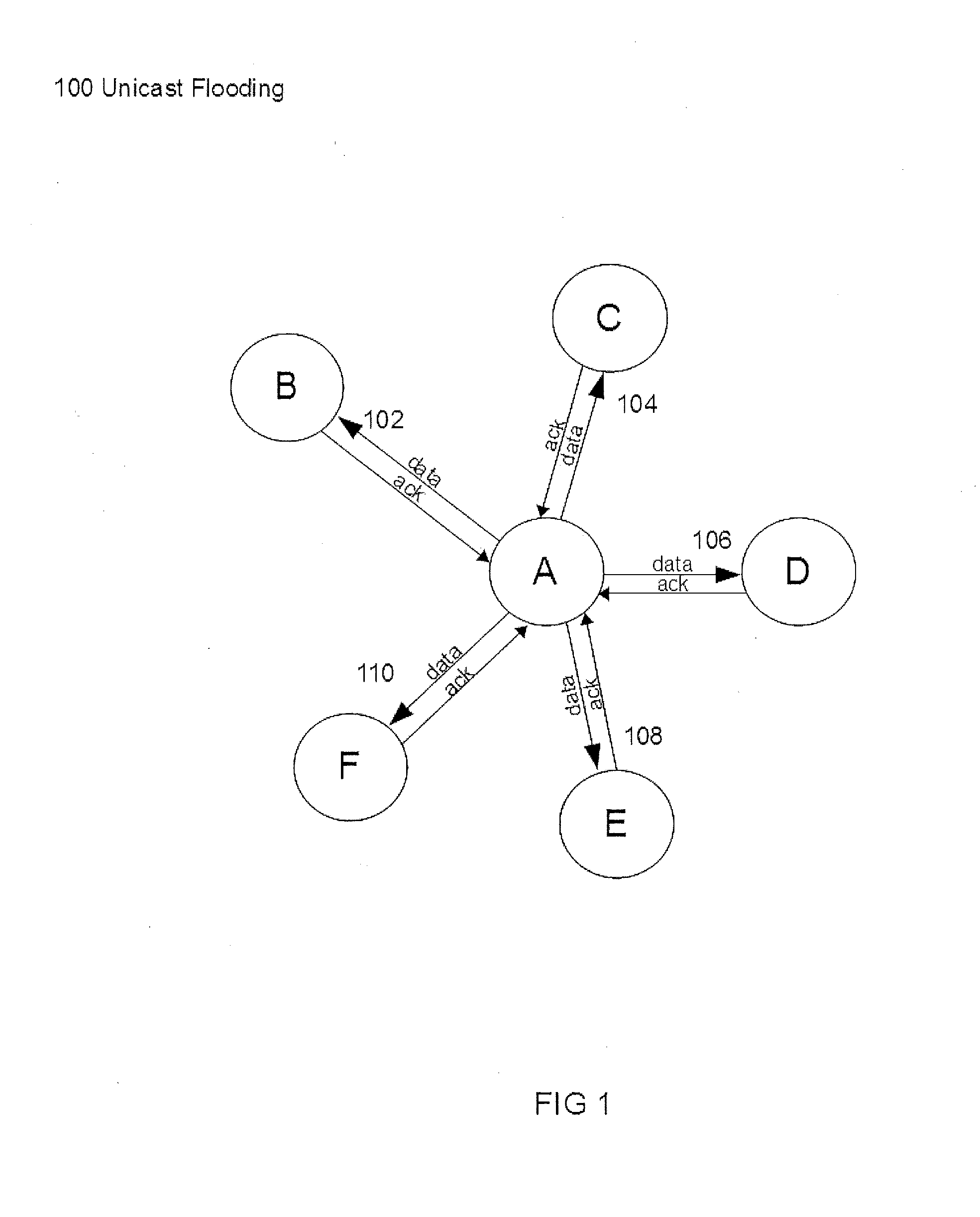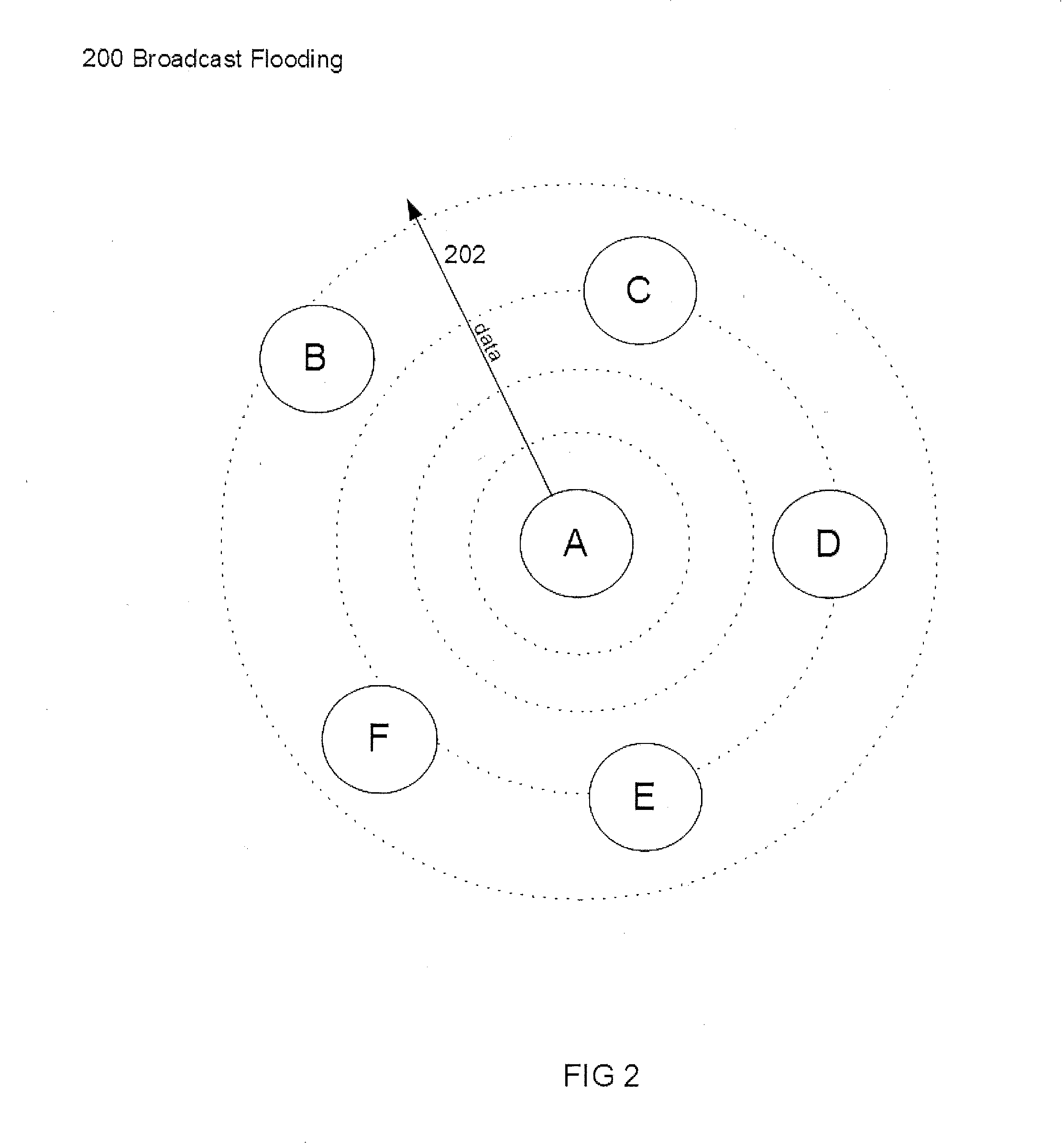Method for controlling flood broadcasts in a wireless mesh network
a wireless mesh network and broadcast control technology, applied in the field of methods, can solve problems such as being considered less reliabl
- Summary
- Abstract
- Description
- Claims
- Application Information
AI Technical Summary
Benefits of technology
Problems solved by technology
Method used
Image
Examples
Embodiment Construction
[0016]A preferred embodiment of the present invention will be set forth in detail with reference to the drawings, in which like reference numerals refer to like elements or steps throughout.
[0017]Many messages are sent via unicast data packets. For a unicast packet, a message is constructed by one node and sent directly to the network address of the receiving node. This packet is, in turn, acknowledged by the receiving node, via an acknowledgment packet sent back to the originating node. If the originating node does not receive the acknowledgment within a defined window of time, resends the packet. Thus, this is a very reliable mechanism, as the network knows when data is not received.
[0018]However, some kinds of messages are sent to every node in a network, one packet that needs to be delivered to every node in the network, commonly referred to as “flooding.” This is performed by forwarding a packet from any node to every other node that it is directly linked with (i.e., neighbor n...
PUM
 Login to View More
Login to View More Abstract
Description
Claims
Application Information
 Login to View More
Login to View More - R&D
- Intellectual Property
- Life Sciences
- Materials
- Tech Scout
- Unparalleled Data Quality
- Higher Quality Content
- 60% Fewer Hallucinations
Browse by: Latest US Patents, China's latest patents, Technical Efficacy Thesaurus, Application Domain, Technology Topic, Popular Technical Reports.
© 2025 PatSnap. All rights reserved.Legal|Privacy policy|Modern Slavery Act Transparency Statement|Sitemap|About US| Contact US: help@patsnap.com



